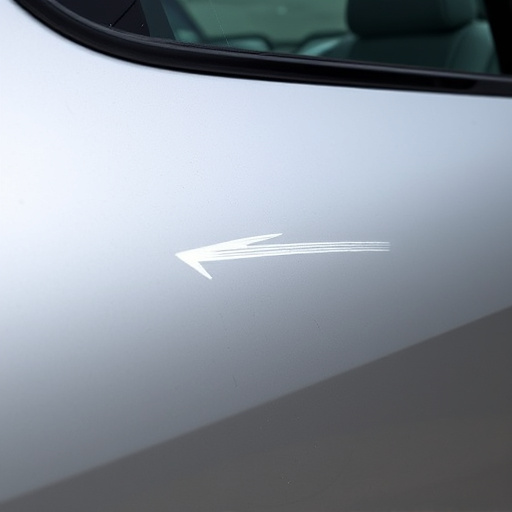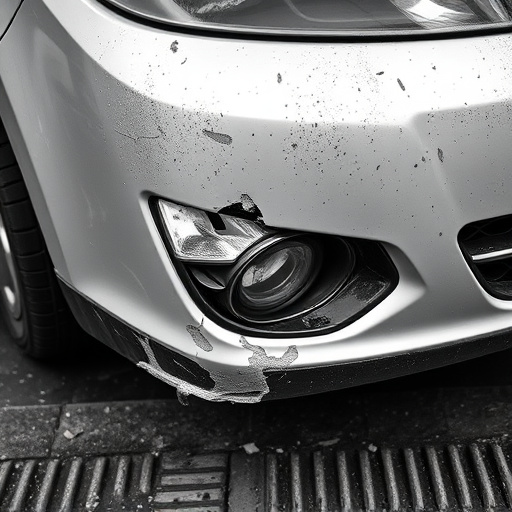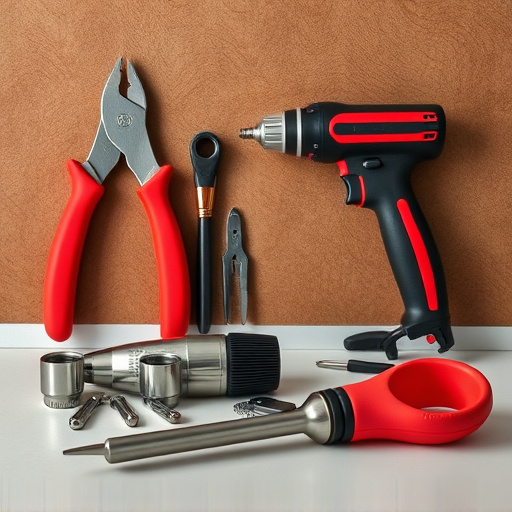Same Day PDR: Streamline Workflow, Boost Efficiency, Delight Customers

Same day PDR (Paintless Dent Repair) revolutionizes auto shop operations by offering swift repairs,…….
Welcome to an in-depth exploration of same-day product delivery (PDR), a game-changing concept transforming the way businesses fulfill customer demands. In today’s fast-paced world, where instant gratification is becoming the norm, same-day PDR offers a cutting-edge solution to bridge the gap between customer expectations and traditional supply chain limitations. This article aims to provide an exhaustive guide, delving into every facet of same-day PDR, from its foundational concepts to its global impact and future prospects. By the end, readers will grasp the transformative potential of this innovative approach.
Definition: Same-day product delivery (PDR) refers to the efficient and timely distribution of goods directly from a retailer’s inventory to the customer’s doorstep, with the primary goal of delivering products within 24 hours. This rapid delivery service goes beyond traditional next-day shipping, offering customers immediate access to the items they desire.
Core Components:
Real-Time Inventory Management: Same-day PDR relies on sophisticated inventory management systems that provide a real-time view of stock levels across multiple warehouses and retail locations. This enables businesses to identify available products and optimize fulfillment routes.
Rapid Order Fulfillment: The process involves swiftly picking, packing, and shipping orders as soon as they are placed. Automated systems, intelligent routing algorithms, and dedicated delivery networks play a crucial role in achieving this speed.
Last-Mile Delivery: This refers to the final stage of the delivery process, where packages are transported from local distribution centers or stores to customers’ addresses. Optimizing last-mile routes is essential for ensuring timely deliveries, especially in urban areas with heavy traffic.
Historical Context: The concept of same-day delivery gained traction in the early 2010s as e-commerce giants like Amazon pioneered new delivery models. Amazon’s “One-Day Delivery” service, launched in 2015, set a new standard, encouraging competitors to accelerate their delivery capabilities. This shift towards instant satisfaction has been further amplified by the rise of mobile shopping and on-demand services.
Significance: Same-day PDR holds immense importance for several reasons:
The impact of same-day PDR is not limited to a single region; it has become a global phenomenon, with countries adopting and adapting this delivery model at varying rates.
| Region | Market Adoption | Key Trends |
|---|---|---|
| North America | High adoption rate, driven by e-commerce giants like Amazon and Walmart. Same-day delivery is now a standard feature for online retailers. | Hyperlocal delivery, same-day pick-up options, and seamless integration with mobile apps are popular trends. |
| Europe | Mixed adoption levels across countries. The UK and Germany have seen significant growth, while others lag due to regulatory challenges and varying consumer preferences. | Click-and-collect services, same-day grocery delivery, and last-mile innovation through micro-fulfillment centers. |
| Asia Pacific | Rapidly growing market, particularly in China and Japan. Same-day PDR is driven by the rise of e-commerce and mobile payments. | Dark store networks, where inventory is stored in centralized locations for same-day delivery, and partnerships with local retailers for last-mile logistics. |
| Middle East & Africa | Increasing adoption, especially in urban areas. The region’s rapid e-commerce growth drives demand for instant delivery options. | Same-day grocery and fashion deliveries, with a focus on improving last-mile infrastructure. |
These trends highlight the global urgency to optimize same-day PDR, as consumers worldwide demand faster and more efficient delivery services.
Same-day PDR has far-reaching economic implications, influencing both supply chain dynamics and investment strategies.
Technology is at the heart of same-day PDR’s success, enabling businesses to overcome logistical challenges and deliver exceptional customer experiences.
Artificial Intelligence (AI) and Machine Learning: AI algorithms optimize inventory forecasting, demand prediction, and route planning, ensuring efficient stock management and timely deliveries. Machine learning models continuously learn from data to improve process efficiency.
Augmented Reality (AR) for Order Picking: AR technology guides pickers through the warehouse, reducing errors and improving picking speed, especially in complex stores.
Drones and Autonomous Vehicles: While still in the experimental phase, drones and self-driving delivery vehicles have the potential to revolutionize last-mile delivery, offering faster and more sustainable options.
Advanced Packaging Solutions: New packaging designs enhance product protection during transit, ensuring items arrive undamaged, even for fragile or perishable goods.
The rapid growth of same-day PDR has led to varying regulatory responses worldwide, as governments strive to balance consumer interests with business operations.
Workplace Regulations: Some regions have implemented rules regarding working hours and rest periods for delivery drivers to ensure their well-being and prevent exploitation.
Traffic Management: Cities are introducing policies to manage traffic congestion caused by frequent deliveries, often involving dedicated lanes or priority signals for delivery vehicles.
Data Privacy and Security: With the collection and processing of vast amounts of customer data, regulations like GDPR in Europe and CCPA in California ensure that businesses handle customer information securely and transparently.
Environmental Concerns: Governments are encouraging sustainable practices by offering incentives for eco-friendly packaging and promoting electric delivery vehicles to reduce carbon emissions.
Despite its numerous benefits, same-day PDR faces several challenges that require strategic solutions.
Main Challenges:
Last-Mile Logistics: Navigating urban traffic and delivering packages in a timely manner remain significant hurdles, especially during peak hours.
Inventory Management: Ensuring accurate inventory levels across multiple locations is complex, requiring sophisticated systems to avoid stockouts or overstock situations.
Cost Implications: The additional costs associated with same-day delivery can be substantial, affecting profit margins, particularly for smaller retailers.
Proposed Solutions:
Collaborative Last-Mile Networks: Retailers and logistics providers can partner to optimize routes, share resources, and reduce last-mile delivery times.
Inventory Visibility and Real-Time Data: Implementing end-to-end inventory management systems that provide real-time data on stock levels, sales trends, and delivery performance enables better decision-making.
Dynamic Pricing Strategies: Adjusting pricing based on demand and capacity can help retailers manage costs while offering competitive prices during peak periods.
Case Study 1: Amazon’s One-Day Delivery
Amazon’s ambitious goal to deliver packages within one day has revolutionized the e-commerce industry. By leveraging its vast distribution network, advanced inventory management, and proprietary delivery technology, Amazon has consistently improved its same-day delivery capabilities. This strategy has led to increased customer satisfaction, higher sales, and a significant market advantage over competitors.
Case Study 2: Instacart’s Same-Day Grocery Delivery
Instacart, an online grocery delivery service, has disrupted the food retail industry with its same-day delivery model. By partnering with local stores, Instacart offers customers the convenience of ordering groceries online and receiving them within hours. This approach has been particularly successful in urban areas, where time-pressed consumers appreciate the instant availability of fresh produce and household essentials.
Case Study 3: Walmart’s Micro-Fulfillment Centers
Walmart has adopted a hyperlocal delivery strategy by establishing micro-fulfillment centers in urban areas. These small, high-tech warehouses enable same-day delivery by quickly fulfilling orders from nearby stores. This approach reduces delivery times and enhances the overall shopping experience, especially for last-minute purchases.
The future of same-day PDR is filled with promising opportunities and emerging trends that will shape its evolution.
Same-day PDR is not just a fleeting trend; it represents a significant shift in how businesses interact with their customers. The global adoption and continuous innovation in this space demonstrate its transformative potential. As consumers increasingly demand instant gratification, retailers must embrace same-day delivery to stay competitive and relevant. By addressing the challenges and leveraging technological advancements, same-day PDR will continue to revolutionize the retail landscape, setting new standards for customer satisfaction and operational efficiency.
Q: How does same-day PDR impact traditional retail stores?
A: Same-day delivery places additional pressure on retail stores to optimize inventory management and fulfillment processes. However, it also presents an opportunity to enhance the overall shopping experience, encouraging customers to visit physical stores for collection or to browse products before opting for same-day delivery.
Q: What are the environmental implications of same-day PDR?
A: While same-day delivery may increase carbon emissions due to frequent deliveries and traffic congestion, there is a growing emphasis on sustainable practices. Retailers can mitigate these impacts by adopting eco-friendly packaging, using electric vehicles, optimizing routes, and encouraging customers to choose green delivery options.
Q: Can small businesses afford to offer same-day PDR?
A: Implementing same-day delivery may be more challenging for smaller retailers due to higher costs. However, they can partner with larger retailers or logistics providers to gain access to their fulfillment networks and infrastructure at a reduced cost. Additionally, dynamic pricing strategies and collaboration with local delivery services can make same-day PDR more affordable.
Q: How does same-day PDR affect worker well-being?
A: Ensuring the well-being of delivery workers is crucial. Retailers should adhere to fair labor practices, including reasonable working hours, adequate rest periods, and safe working conditions. Some companies also offer incentives and rewards to recognize the hard work of their delivery teams.

Same day PDR (Paintless Dent Repair) revolutionizes auto shop operations by offering swift repairs,…….

Same-day PDR (Paintless Dent Repair) is a growing demand in auto body services, requiring skilled te…….

Same day PDR (Paintless Dent Repair) meets growing demand for immediate car paint services, revoluti…….

Same Day PDR is a game-changer in automotive repair, offering immediate solutions for minor vehicle…….

Same-Day PDR is a game-changer in the auto industry, offering swift and efficient car bodywork repai…….

Same-day Paintless Dent Repair (PDR) offers swift solutions for urgent car repairs, ideal for quick…….

Same Day PDR offers convenient, efficient dent removal and auto glass repair services directly at cu…….

Same-day Paintless Dent Repair (PDR) is a competitive and strategic field where skilled technicians…….

Same Day PDR is transforming auto repairs with its cutting-edge, efficient solutions for minor to ma…….

Same-day Paintless Dent Repair (PDR) services offer swift and convenient solutions for minor vehicle…….